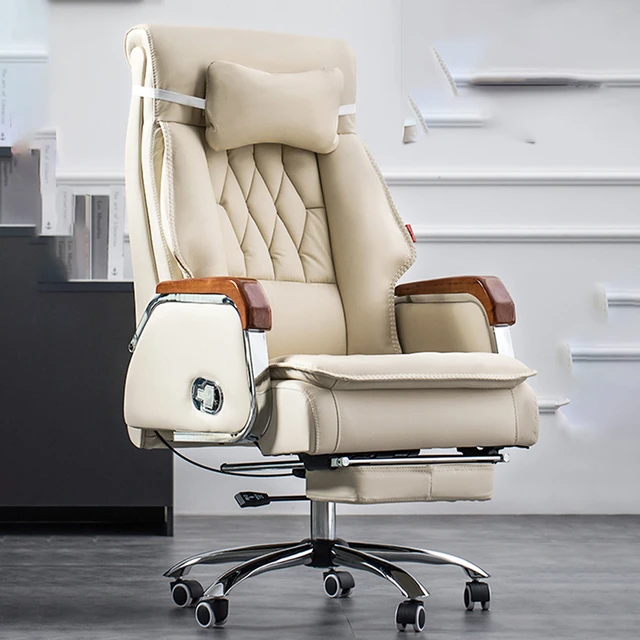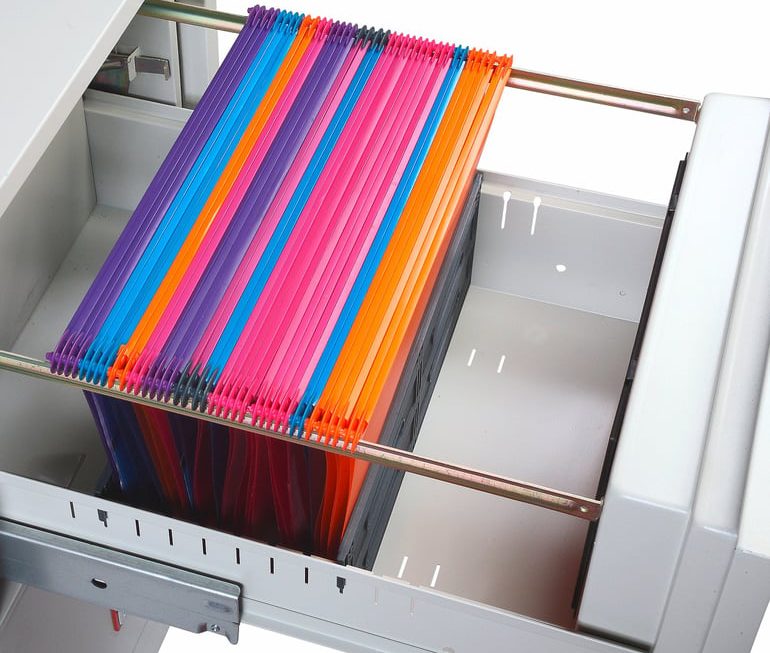In 2024, an office chair that keeps sinking is a common problem and a source of considerable frustration. When your chair slowly lowers itself every time you sit down, it disrupts your comfort and productivity. However, this issue is relatively straightforward to fix, and you don’t need to spend a fortune on a new chair. How to fix an office chair that keeps sinking? This comprehensive guide will walk you through the steps to diagnose and repair a sinking office chair, ensuring a stable and comfortable seating experience.
Understanding the Problem: Why Does an Office Chair Sink?
Before diving into the repair process, it’s essential to understand why your office chair keeps sinking. This section explores the common reasons behind this issue, helping you diagnose the root cause effectively.
Gas Lift Cylinder Malfunction
The most common reason for a sinking office chair is a malfunctioning gas lift cylinder. The gas lift cylinder is a pneumatic tube that uses gas pressure to adjust the chair’s height. Over time, the seals within the cylinder can wear out, causing the gas to leak. When this happens, the chair loses its ability to maintain height and sinks under the user’s weight. Recognizing a faulty gas lift cylinder is the first step toward fixing the problem.
Worn-Out Components
Office chairs are subject to daily wear and tear. Components like the height adjustment lever and internal mechanisms can deteriorate with regular use. If these parts are worn out or damaged, they can fail to hold the chair at the desired height. Identifying worn-out components can help you decide whether a simple repair or a replacement is necessary.
Manufacturing Defects
In some cases, manufacturing defects can cause a chair to sink prematurely. These defects might include poorly designed or assembled gas cylinders and adjustment mechanisms. If your chair is relatively new and still under warranty, it is worth checking for any potential defects. Contacting the manufacturer for a replacement or repair can save you time and effort.
Tools and Materials You’ll Need
Gathering the right tools and materials is crucial for effectively fixing a sinking office chair. This section lists everything you’ll need to complete the repair process, ensuring you’re well-prepared before starting.
Essential Tools
- Screwdrivers: Both Phillips and flathead screwdrivers are essential for disassembling and reassembling parts.
- Pipe wrench: A pipe wrench is necessary for removing the old gas lift cylinder.
- Rubber mallet: Useful for gently tapping components into place without causing damage.
- Allen wrenches: Many office chairs use hex screws, so having a set of Allen wrenches is necessary.
- Lubricant: WD-40 or silicone spray can help in loosening stuck parts.
Replacement Parts and Materials
- New gas lift cylinder: Ensure you purchase a compatible gas lift cylinder for your office chair model.
- Duct tape or PVC pipe: If you opt for a temporary fix, either duct tape or PVC pipe can be used to stabilize the chair height.
- Zip ties: Useful for securing certain components during the repair process.
Diagnosing the Issue
Before you begin any repairs, it’s essential to diagnose the issue accurately. This section guides you through the diagnostic process, ensuring you correctly identify the cause of the sinking problem.
Inspecting the Gas Lift Cylinder
Start by inspecting the gas lift cylinder. Sit in the chair and activate the height adjustment lever. If the chair rises and then gradually sinks, the cylinder is likely the culprit. Remove the chair from the base and examine the cylinder for any visible damage or leaks. Check if the cylinder can hold its position when you press down on it. A faulty cylinder will fail to maintain height under pressure.
Examining the Height Adjustment Mechanism
If the gas lift cylinder appears to be in good condition, inspect the height adjustment mechanism. This mechanism is usually located beneath the seat and connects to the height adjustment lever. Ensure that the lever engages and disengages properly. Look for any signs of wear, damage, or misalignment in the components. A malfunctioning height adjustment mechanism can also cause the chair to sink.
Checking for Loose Components
Loose components can also contribute to a sinking chair. Check all screws, bolts, and nuts to ensure they are tight and secure. Pay special attention to the connections between the seat, base, and gas lift cylinder. Tighten any loose screws or bolts using the appropriate tools. Sometimes, a simple adjustment can resolve the issue without needing further repairs.
Fixing the Sinking Office Chair: Step-by-Step Guide
Once you’ve diagnosed the issue, it’s time to fix the sinking office chair. This step-by-step guide will walk you through the repair process, providing detailed instructions to ensure a successful fix.
Step 1: Remove the Old Gas Lift Cylinder
If the gas lift cylinder is the problem, you’ll need to replace it. Follow these steps to remove the old cylinder:
- Detach the Base: Turn the chair upside down and locate the retaining clip or bolts that secure the base to the gas cylinder. Use a screwdriver or Allen wrench to remove these fasteners. Gently pull the base away from the chair.
- Remove the Cylinder: Use a pipe wrench to grip the gas lift cylinder near the top where it connects to the seat mechanism. Twist the wrench to loosen the cylinder, then pull it out. If the cylinder is stuck, use a rubber mallet to tap it gently, loosening it from the seat mechanism.
Step 2: Install the New Gas Lift Cylinder
With the old cylinder removed, follow these steps to install the new one:
- Prepare the New Cylinder: Ensure the new gas lift cylinder is compatible with your chair model. Remove any packaging or caps from the cylinder.
- Insert the Cylinder: Place the new cylinder into the seat mechanism, aligning it with the opening. Press it firmly into place.
- Attach the Base: Reconnect the base to the new gas lift cylinder. Secure it with the retaining clip or bolts, ensuring everything is tight and secure.
Step 3: Reassemble and Test
Once the new cylinder is installed, reassemble the chair and test it to ensure the problem is resolved:
- Reassemble the Chair: Turn the chair upright and sit in it. Test the height adjustment lever to ensure it works smoothly. Adjust the chair to your desired height and check if it maintains its position.
- Test for Stability: Sit in the chair and move around to ensure stability. The chair should hold its height without sinking. If you notice any issues, recheck the installation and make necessary adjustments.
Temporary Fixes for Sinking Office Chairs
If you’re unable to replace the gas lift cylinder immediately, temporary fixes can provide a short-term solution. This section outlines two effective temporary fixes: using duct tape and using a PVC pipe.
Using Duct Tape
Duct tape can be used to stabilize the chair height temporarily. Follow these steps:
- Adjust the Chair Height: Set the chair to your desired height and activate the height adjustment lever to lock it in place.
- Wrap the Cylinder: Wrap a thick layer of duct tape around the gas lift cylinder, just below the seat mechanism. Ensure the tape is tight and secure.
- Test the Chair: Sit in the chair and test for stability. The duct tape should hold the cylinder in place, preventing it from sinking.
Using a PVC Pipe
A PVC pipe can also be used to stabilize the chair height. Follow these steps:
- Measure the Cylinder: Measure the length of the gas lift cylinder when the chair is at your desired height.
- Cut the Pipe: Cut a piece of PVC pipe to the measured length. Ensure the pipe fits snugly around the cylinder.
- Install the Pipe: Slide the PVC pipe over the gas lift cylinder, positioning it between the base and seat mechanism.
- Test the Chair: Sit in the chair and test for stability. The PVC pipe should hold the cylinder in place, preventing it from sinking.
Preventing Future Issues
Preventing future issues with your office chair ensures lasting comfort and productivity. This section provides tips on maintaining your chair and avoiding common problems.
Regular Maintenance
Perform regular maintenance on your office chair to keep it in good condition. Tighten screws and bolts, lubricate moving parts, and clean the chair regularly. Regular maintenance prevents minor issues from becoming major problems.
Avoid Overloading the Chair
Avoid exceeding the weight capacity of your office chair. Overloading the chair can cause stress on components, leading to issues like sinking. Follow the manufacturer’s guidelines for weight limits and ensure the chair is used within its capacity.
Use Chair Mats
Using a chair mat can reduce stress on the chair’s wheels and base, prolonging its lifespan. Chair mats provide a smooth surface for the wheels to glide on, preventing damage and ensuring stability.








